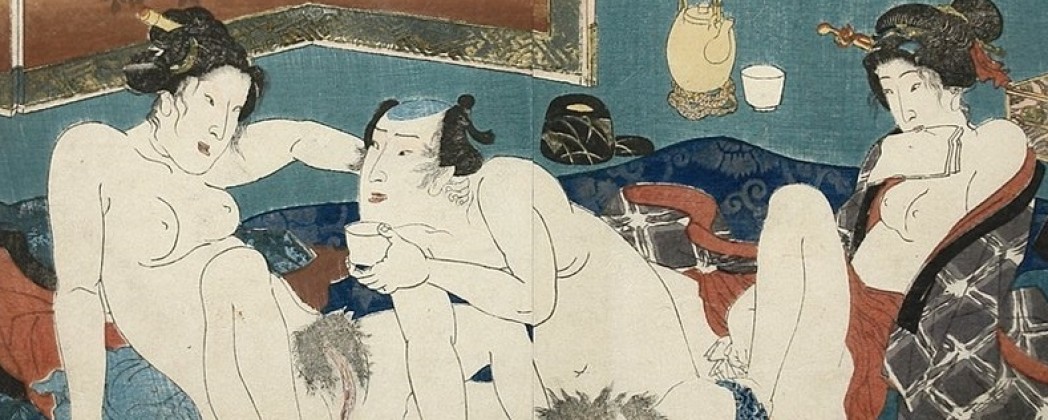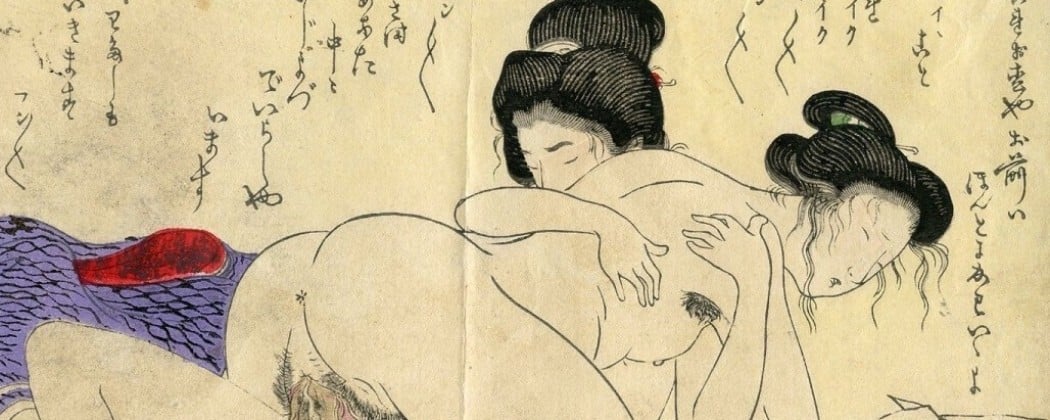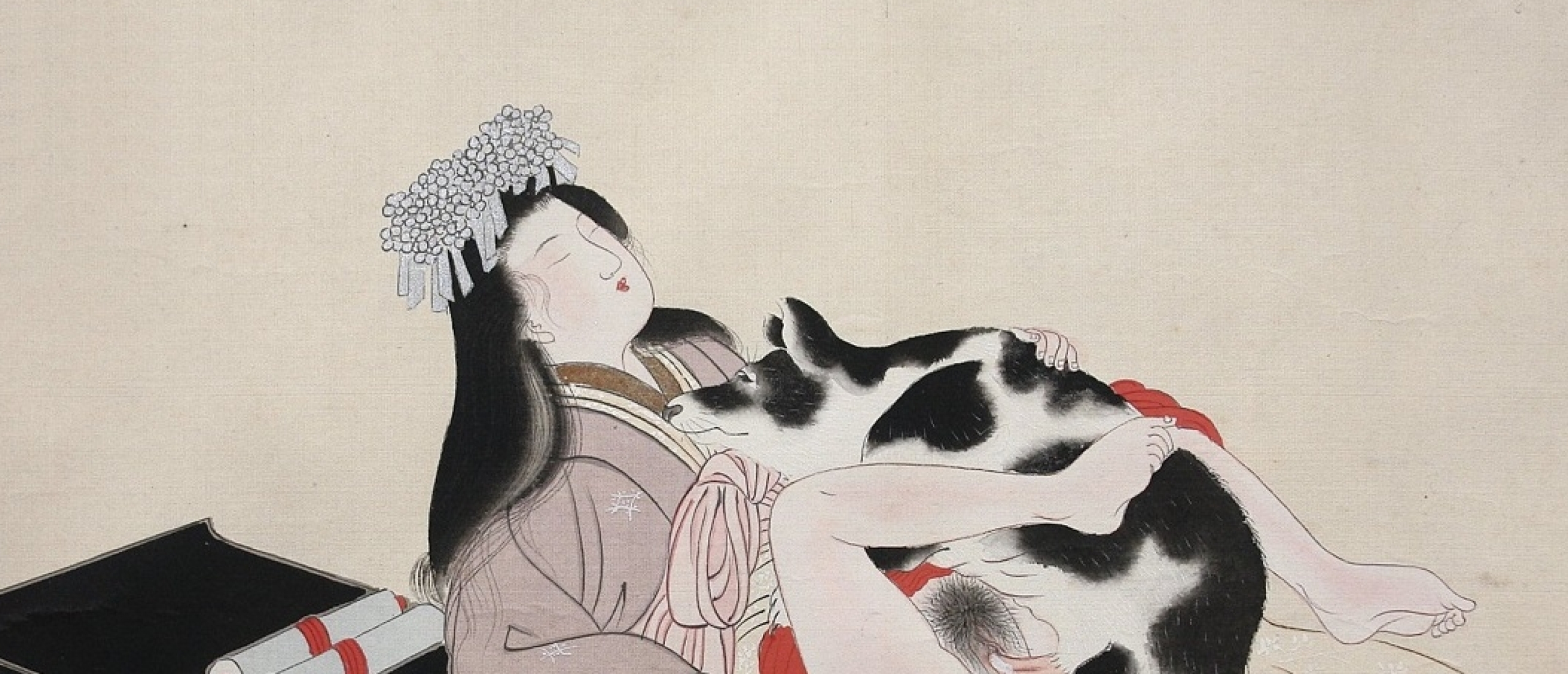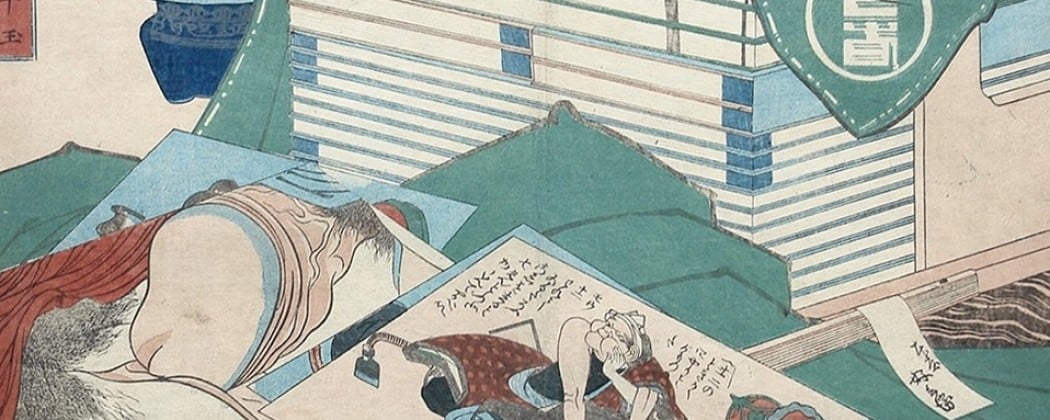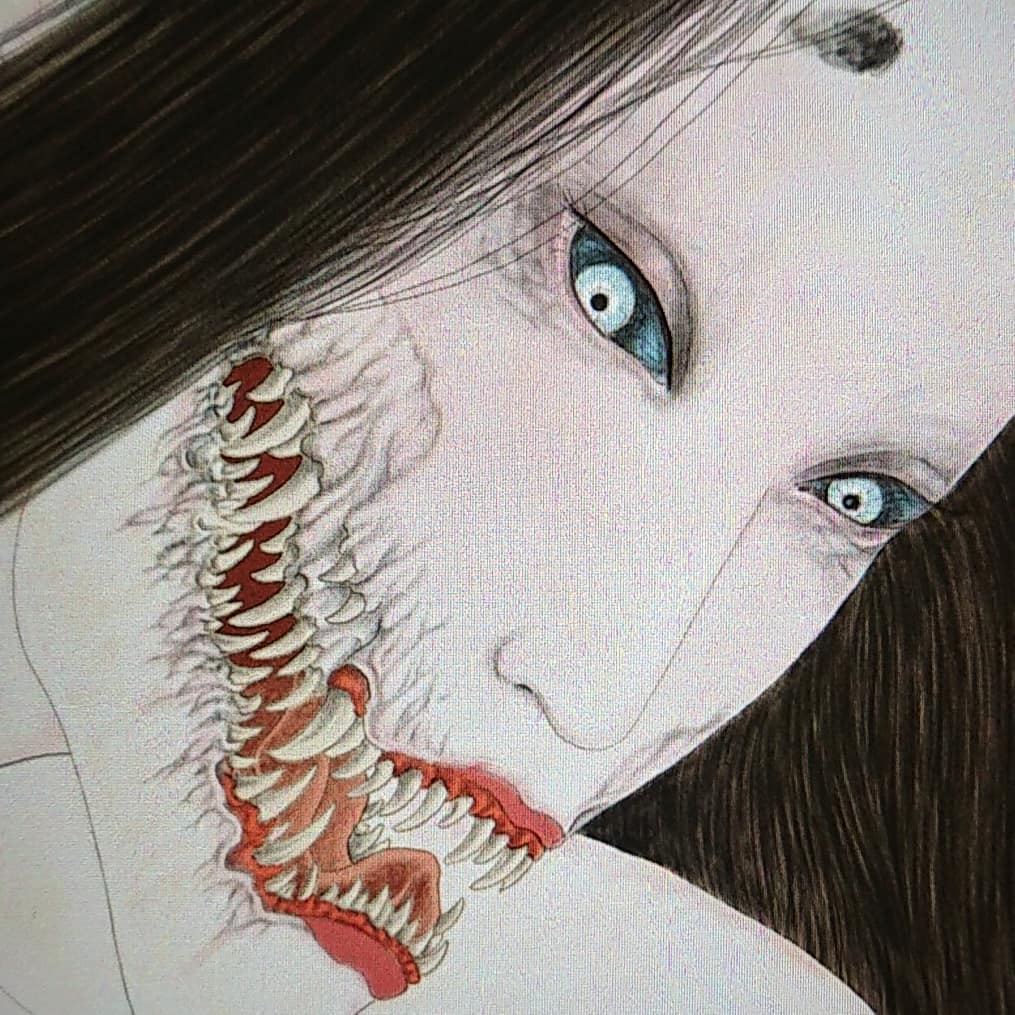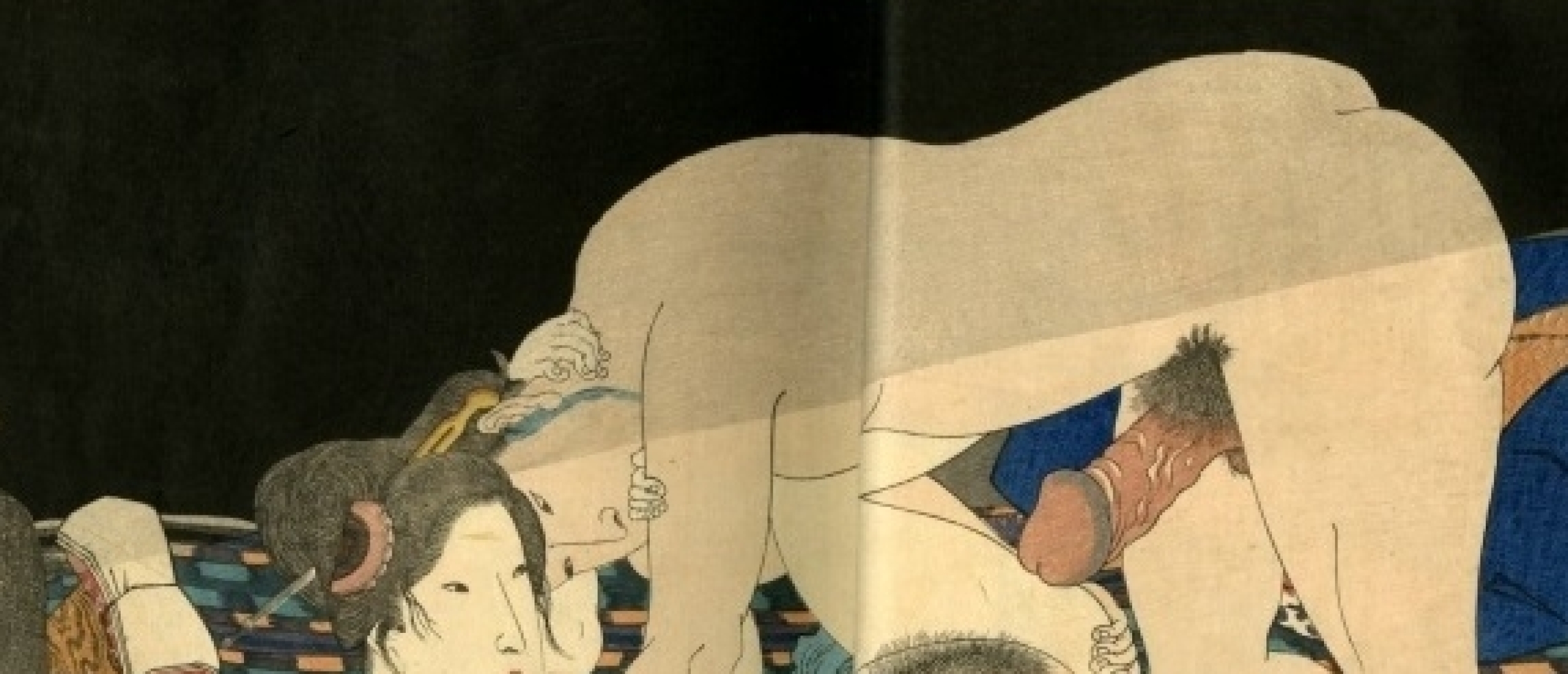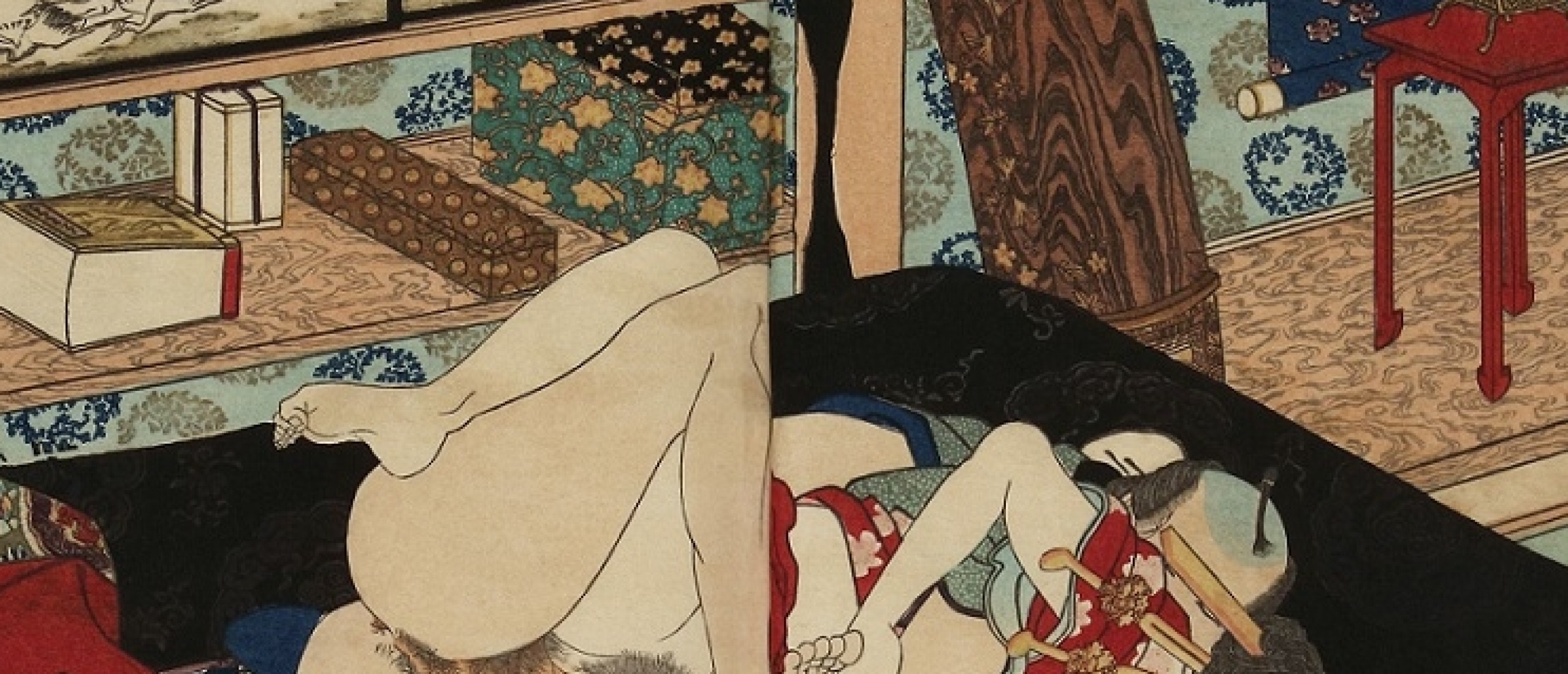
Utagawa Kunisada (1786-1865) created three shunga book series (called “Three Genji”) around the subject of Genji monogatari (The Tale of Genji). The designs below are from the third and the last of this series called ‘Seisha aioi Genji (aka. ‘The Zodiac’ series or ”A True-life Devoted Genji’), published in 1851.

Fig.1. ‘Passionate noble couple with candlestick‘ (c.1851) from the series ‘Seisha aioi Genji (aka. ‘The Zodiac series’ or ‘A True-life Devoted Genji’)‘ by Utagawa Kunisada (available in our gallery for Euro 850,-)
Fashionable Hair-Style
The series is a tale of the amorous adventures of Ashikaga Yoshimitsu (here holding a candlestick), the third Muromachi shogun. He is shown sporting a fashionable hair-style, just like the protagonist of the previous series Enshi goju-yojo (1835) and Azuma Genji (1837) that featured the hero Mitsuuji.

Fig.2. Different impression of the same Kunisada design (Fig.1.), c.1851 (Available for Euro 850,-)
Who Was The Client?
There are variations on the private-edition theory, including one that asserts that all three Kunisada Genji were created for Matsudaira Yoshinaga (nickname ‘Shungaku’). But since the Three Genji’s were created over a period of 15 years it is unlikely that all three were private editions. According to the Japanese author Mitamura Engyo (1870-1952) the customer was not Matsudaira Yoshinaga but Matsudaira Naritami, a daimyo of Sakushu Tsuyama. Naritami used the pen name Kakudo.

Fig.3. ‘Drinking sake‘ (c.1851) from the series ‘Shõ-utsushi Aioi Genji (A True-life Devoted Genji)‘ Available: Euro 850,-
Fig.3. A woman riding on top of her lover (the hero Yoshimitsu) is pouring sake into his cup from a flacon while affectionately holding on to his neck. The blanket near them on the right depicts dragons in a circle-shaped form. The gold-lacquered folding screen behind them features a titmouse on a twig and and cherry blossoms in bloom. Look for the meticulously printed details on Yoshimitu’s kimono and the use of gold lacquer.

Fig.4. ‘Samurai in forest‘ (c.1851) from the series ‘Shõ-utsushi Aioi Genji (A True-life Devoted Genji)‘ No longer available (Sold)
“A truly superb design (Fig.4.) with the hero Yoshimitsu still wearing his samurai attire while having intercourse with one of his mistresses in the forest at night. On the tree stump lay a candlestick and an axe. The black teeth (ohaguro) of the woman indicates that she is married and therefore committing adultery.”

Fig.5. ‘Green blanket‘ (c.1851) from the series ‘Shõ-utsushi Aioi Genji (A True-life Devoted Genji)‘ No longer available (Sold)
Click HERE for more content on the beautiful erotic art by Kunisada!
Source: ‘The Complete Ukiyo-e Shunga: Kunisada’s Shunga Book Sho-utsushi Aioi Genji (Vol.19)‘ by Yoshikazu Hayashi

